NEW
ZEALAND
Tour Description
21 Day Tour
October 21 to November 10, 2019
 Hard
to beat for spectacular scenery, New Zealand offers
nutrient-rich blue seas teeming with sea lions, dolphins, and fur seals over
which glide albatrosses; shorelines of penguins; rugged coastlines and dramatic
capes hosting gannet and tern colonies; estuaries for spoonbills; mirrored lakes
reflecting snow-capped mountains, sheep-grazed
hills; mossy forests and ancient podocarpus forests where Kokako glide across
the high canopy; alpine meadows and scree slopes; braided rivers spilling down
from the Southern Alps; hanging glaciers; geysers, hot springs, boiling mud
pools and volcanoes; and endemic birds with strange names like Kaka, Kea, and Kiwi.
Curiously, New Zealand has no native land mammals. Enjoy adventures too, like
boat cruises through mile-high fiords, across cold
mountain lakes or into underground caverns. Thrill to a jetboat ride over
river rapids or taking a luge down a mountain track. Visit Hobbiton, the
miniature village where Lord of the Rings was filmed. Take a breath and enjoy it all!
Hard
to beat for spectacular scenery, New Zealand offers
nutrient-rich blue seas teeming with sea lions, dolphins, and fur seals over
which glide albatrosses; shorelines of penguins; rugged coastlines and dramatic
capes hosting gannet and tern colonies; estuaries for spoonbills; mirrored lakes
reflecting snow-capped mountains, sheep-grazed
hills; mossy forests and ancient podocarpus forests where Kokako glide across
the high canopy; alpine meadows and scree slopes; braided rivers spilling down
from the Southern Alps; hanging glaciers; geysers, hot springs, boiling mud
pools and volcanoes; and endemic birds with strange names like Kaka, Kea, and Kiwi.
Curiously, New Zealand has no native land mammals. Enjoy adventures too, like
boat cruises through mile-high fiords, across cold
mountain lakes or into underground caverns. Thrill to a jetboat ride over
river rapids or taking a luge down a mountain track. Visit Hobbiton, the
miniature village where Lord of the Rings was filmed. Take a breath and enjoy it all!
Day
1: Our New Zealand tour originates in Auckland. Those travelers from our
Queensland and Sydney tour will be flying to Auckland this day and be transported to the hotel
near Auckland harbor. Hotel in Auckland for two
nights.
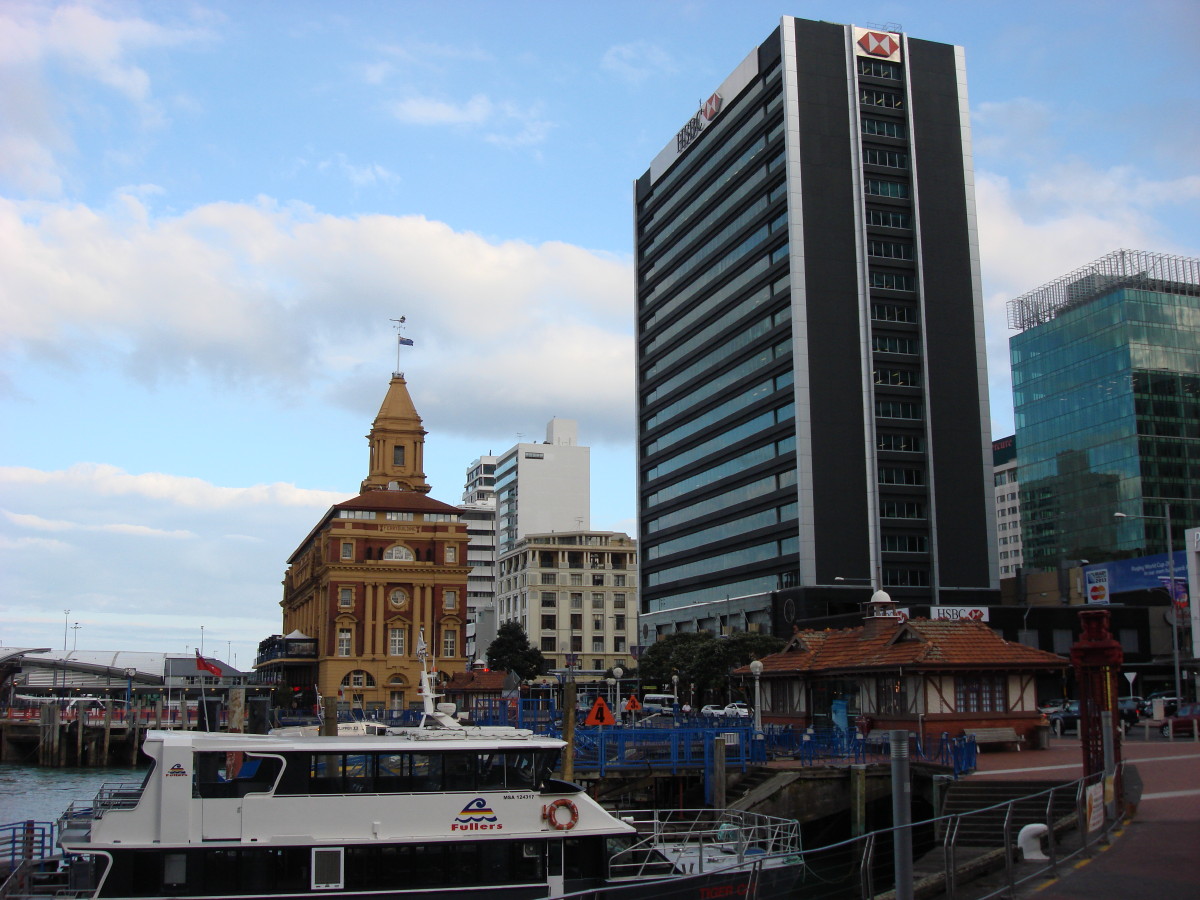
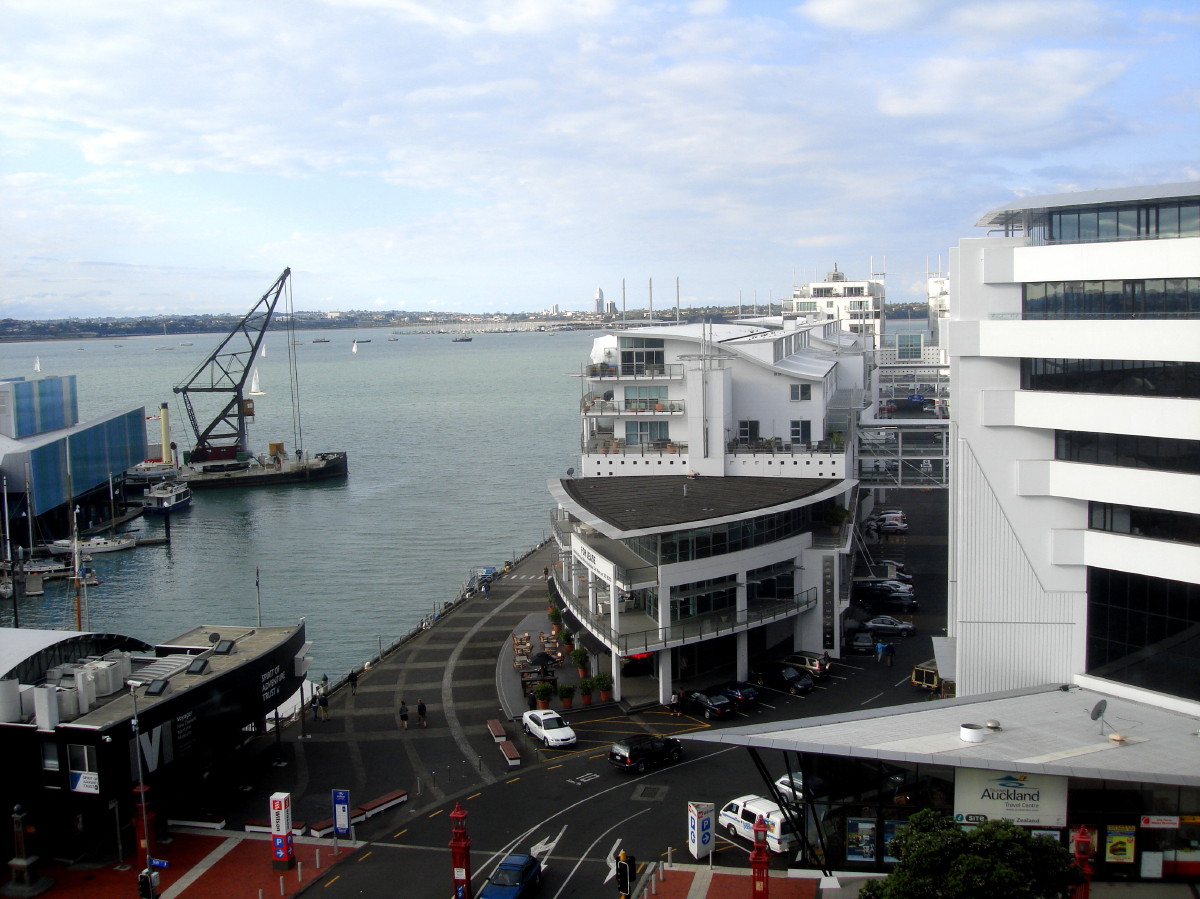
Day 2: Hotel breakfast will be provided, at which time we will conduct
our tour orientation meeting. Two choices of itineraries
are available for today. Tiritiri Mantangi Island is a must-visit site for
nature lovers hoping to
see New Zealand endemic birds. We will take a 30-minute ferry ride from Auckland and
a guided tour of the island that was once farmlands but now is native forests
resulting from an enormous revegetation project from 1984 to 1994. Some 78
species of birds have been observed on or near the island, including endangered
species such as Little Spotted Kiwi, Brown Teal, Takahe, Stitchbird, and Kokako.
Other endemic species are New Zealand Pigeon, New Zealand Bellbird, Tui, New
Zealand Robin, and Whitehead. A packed lunch is included.
Alternatively, an on-off narrated bus tour of Auckland is offered for those
who would rather see city sights. The tour includes Sky City,
Auckland waterfront, Parnell Village, Kelly Tarlton's, Mount Eden, Auckland Zoo,
and many more stops. Last tour, the Auckland Museum was highly
recommended. Lunch will be included.
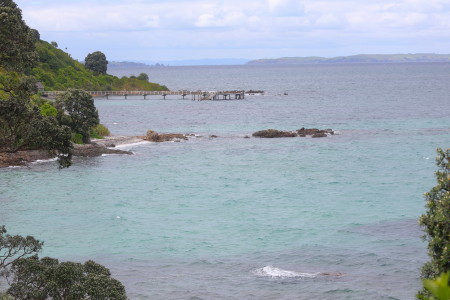
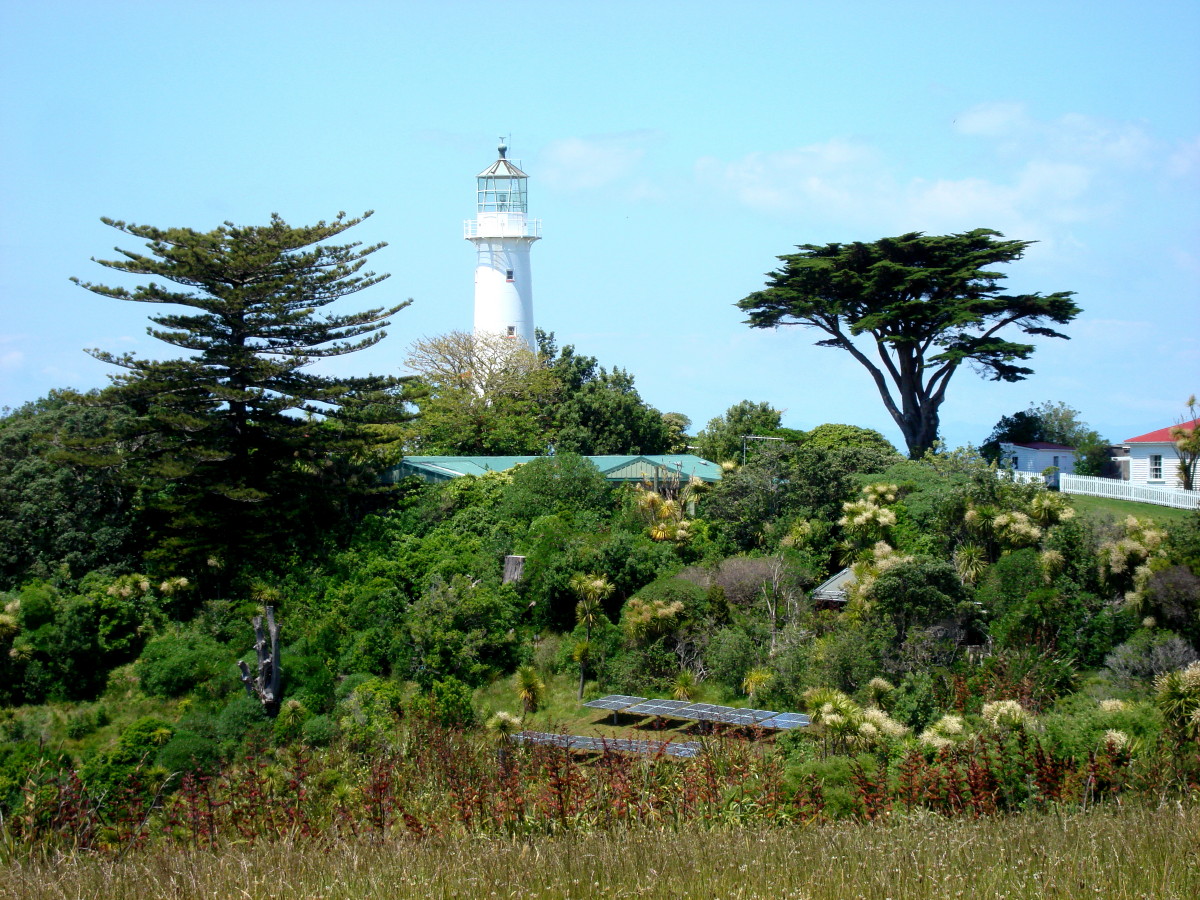


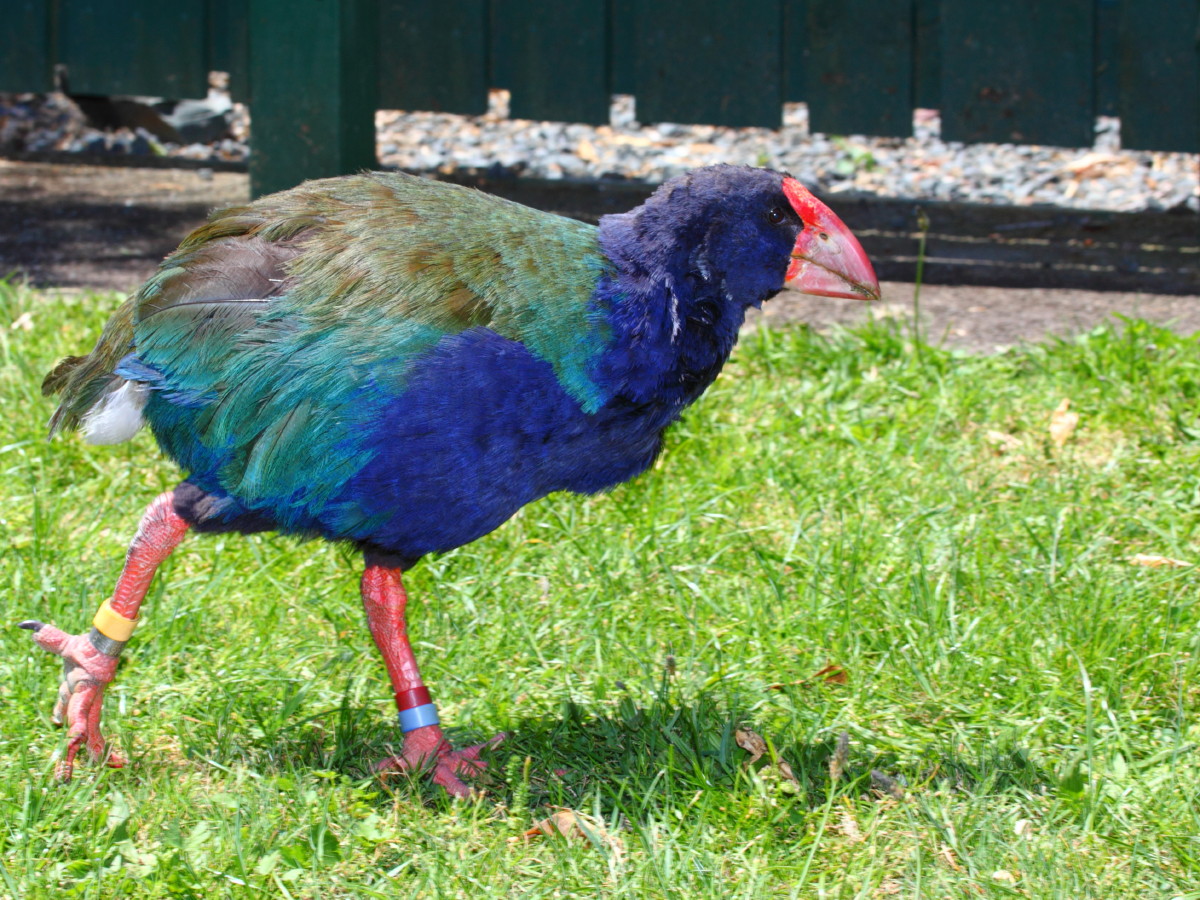
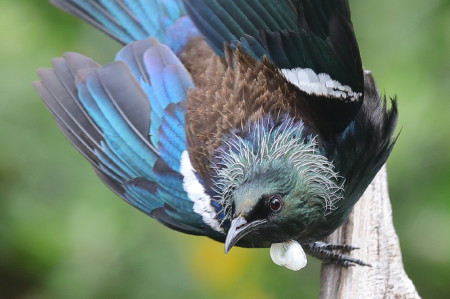
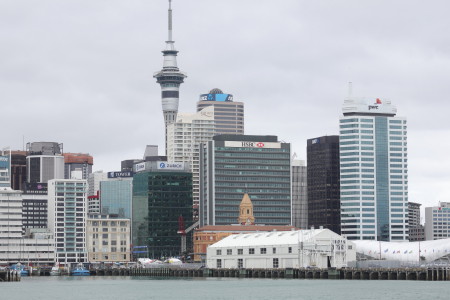
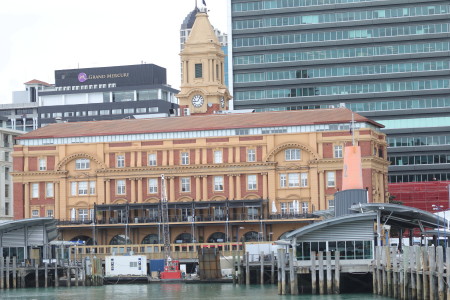
Day 3: We will be renting RV’s for travel, sleeping,
and many meals. Typically, these are late model Class C turbo diesel vehicles
accommodating two to four adults and including double bed, gas stove,
refrigerator, microwave, shower, toilet, air-conditioning/heating, pressurized
hot & cold water, and TV/radio/CD player. Also included are linen, bedding, and
kitchen equipment. We will pick up our RVs in the morning, get groceries, and head to the Firth of Thames
where thousands of Bar-tailed Godwits gather in the Austral winter. At the
Shorebird Centre a local
naturalist will explain the godwits phenomenal migration flight across the Pacific
from Alaska. The Centre offers an attractive gift shop and a wide
selection of New Zealand nature books. At the estuary, we will
especially seek out Wrybills, the unusual shorebird with a bill that hooks to
the right. At our Miranda campsite we can luxuriate in a swimming pool filled
from thermal mineral springs pouring in from below at a temperature of 97-100°. (Travel ~82 mi.).


Day 4: After revisiting the beach in early morning, we drive toward Waitomo.
In the afternoon we take a guided walking tour through Waitomo Glowworm Cave, first
discovered 400-500 years ago by a young Maori hunting for birds. This tour
is followed by a boat ride through the underground Ruakuri Cave where
we will marvel at these bioluminescent insects (Arachnocampa luminosa) illuminating
Glowworm Grotto. We camp at Waitomo for one night. (Travel ~100 mi.).
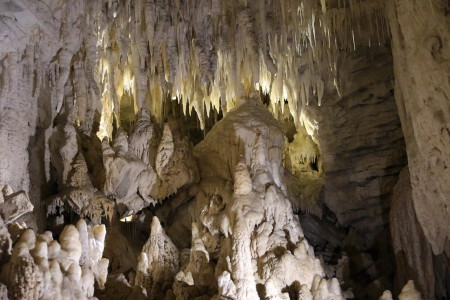

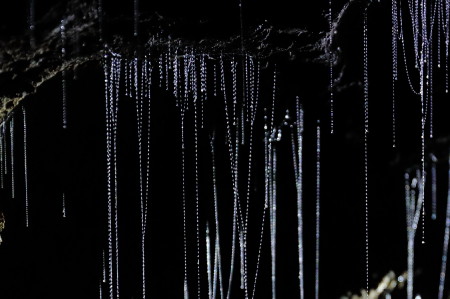

Day 5: Our first stop today is Hobbiton, the famous
tiny village were the Hobbits lived when filming Lord of the Rings. For
lunch we will feast at Shire's Rest Cafe right in Hobbiton. Next we drive in the direction of Rotorua
and stop at a raptor facility that raises endangered New Zealand Falcons for
release into the wild. Here we will view a falconry training session,
affording amazing close ups of these birds in action and flying freely. We camp at Rotorua. (Travel ~90 mi.).

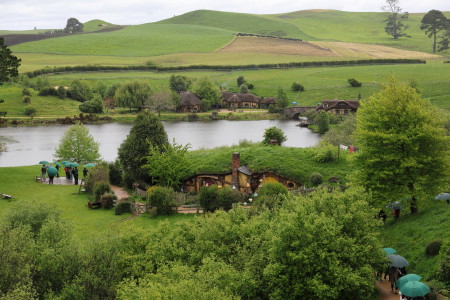
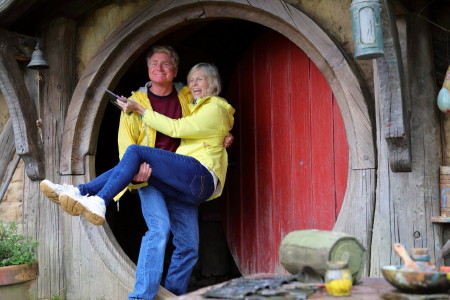

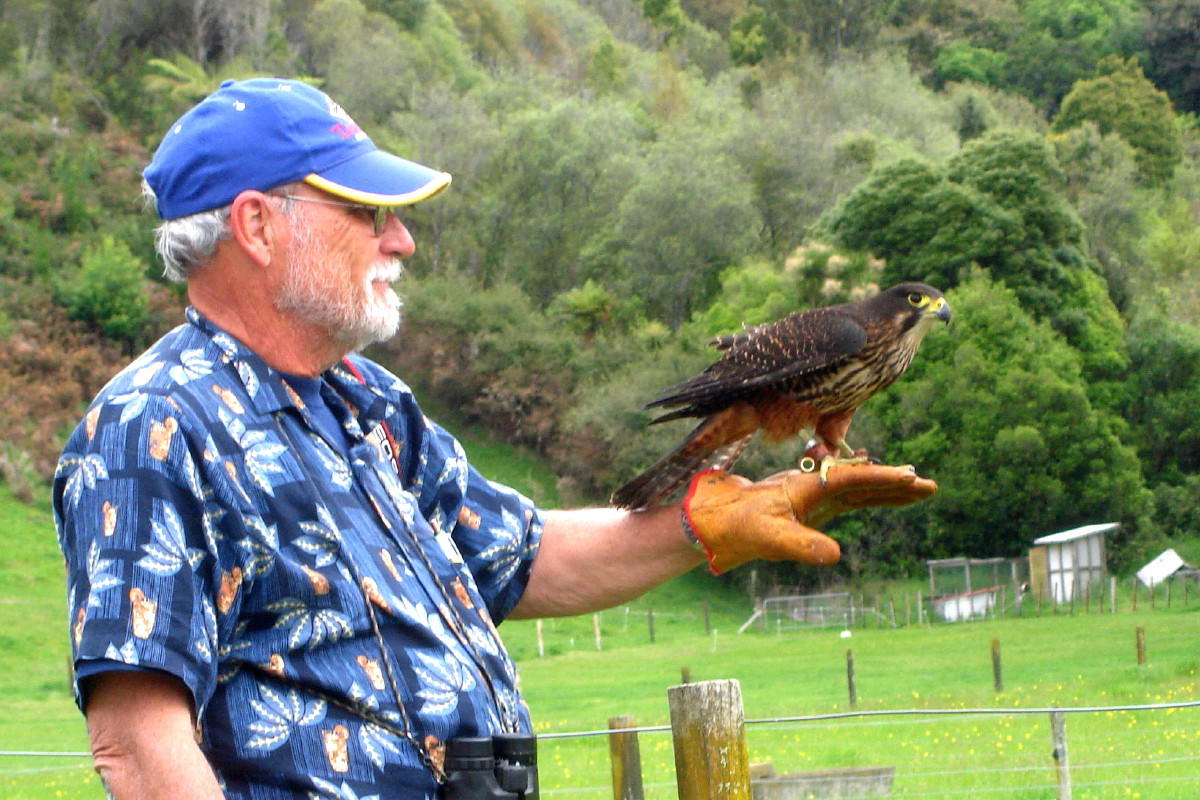

Day 6: Our travels today take us past Lake Taupo, New Zealand’s largest lake,
and on to Napier. En route we can stop at Huka Falls where a turbulent turquoise
river plunges through a narrow gap in the rock substructure. Near Taupo
we'll take a wild ride on the Rapids Jet Boat as it jumps and turns over
whitewater rapids. Some may choose to visit Ahuriri Estuary which offers a variety of birds such as Australian Shoveler,
Rufous-necked Stint, and a high concentration of Silver-eyes. Others
will want to check out the Classic Sheepskins Tannery where you could have a
tour of the sheep tanning process and purchase sheepskin products, such as warm
clothing made from the fur of Alpaca and possum. In the afternoon we have the
unique experience of riding in a
wagon pulled by a tractor, racing to beat the incoming tide along the narrow rock-strewn beach and vertical cliffs
that graphically depict rock shifts caused by earthquakes.
Then we visit Cape Kidnappers
for a view of largest
mainland colony (7500 pairs) of Australian Gannets and a colony of White-fronted
Terns. Camp at Napier. (Travel ~164 mi.).

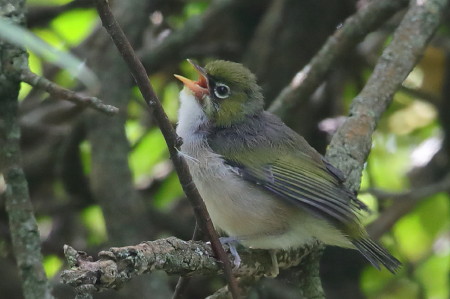

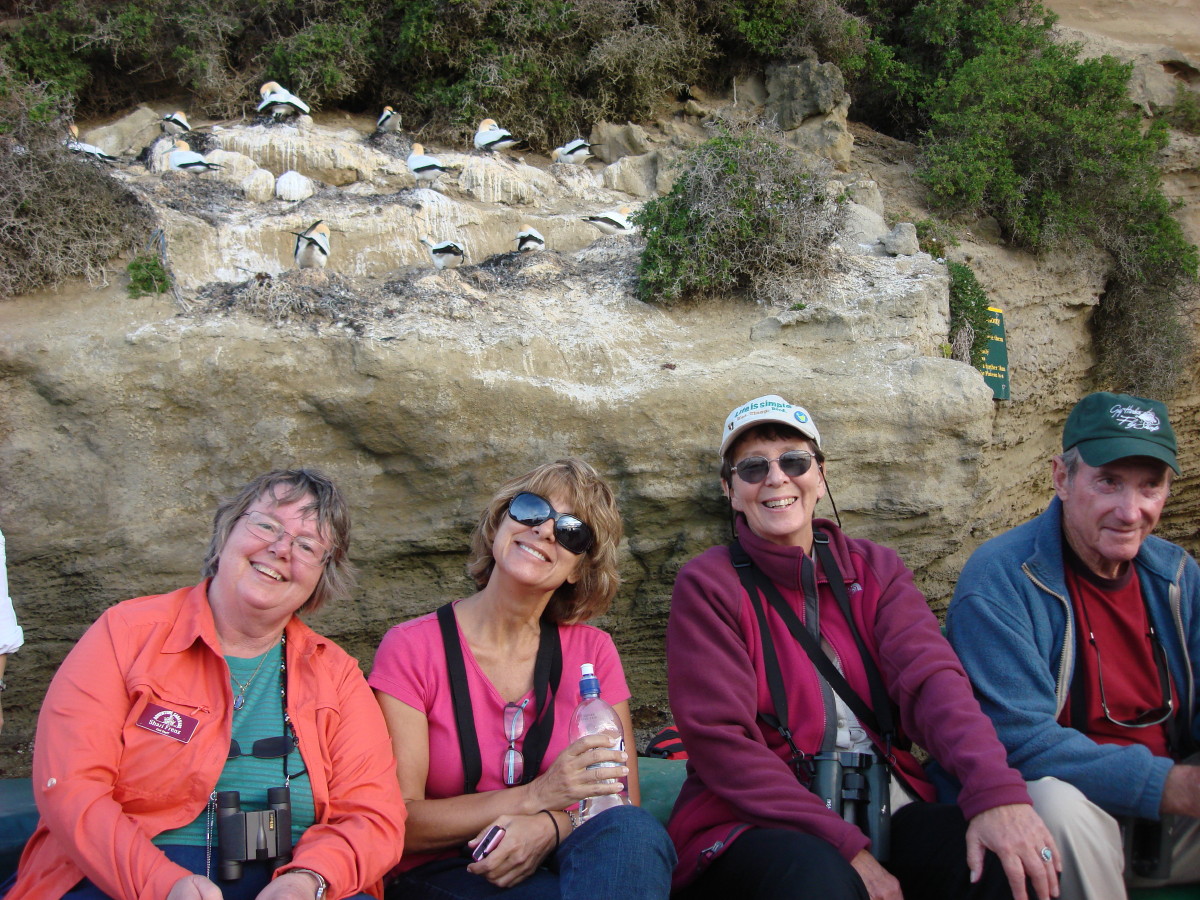
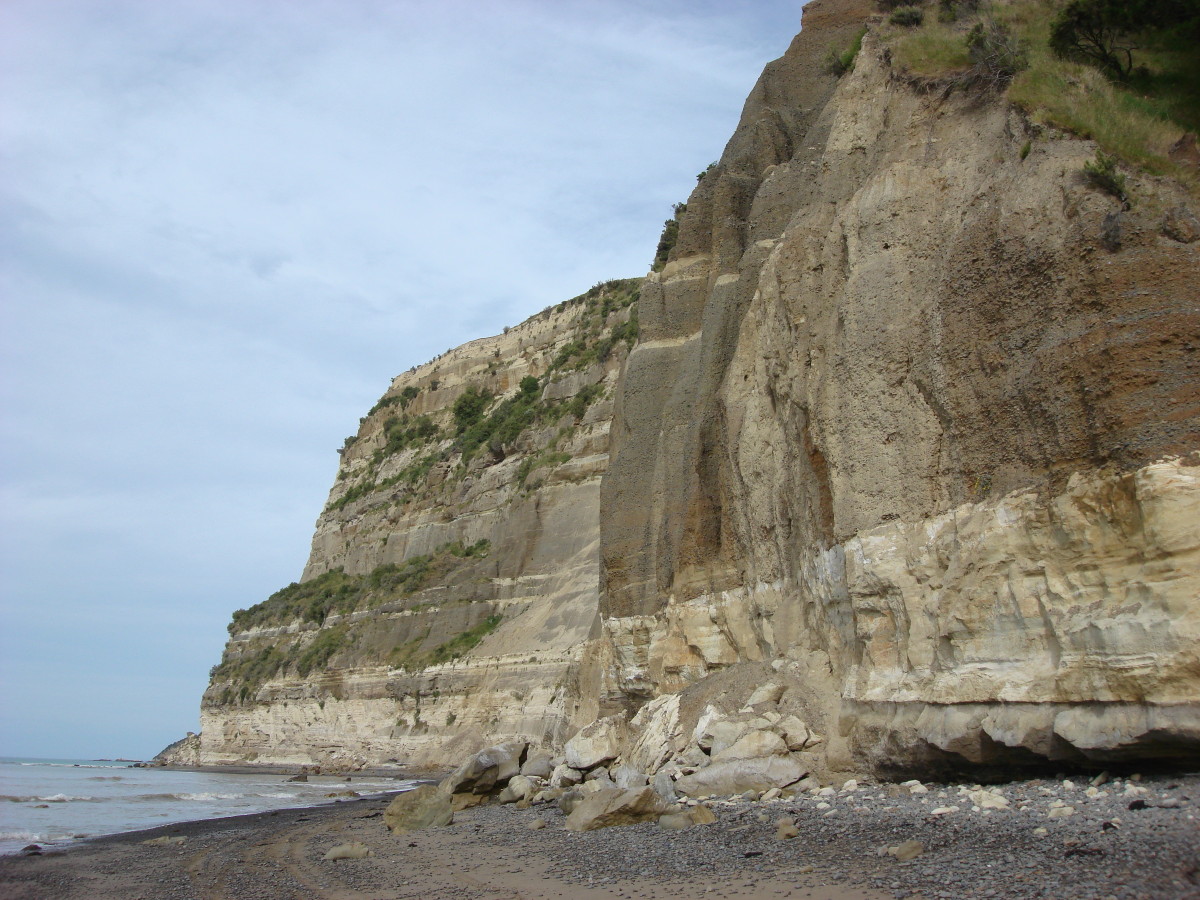

Day 7: On the way to Wellington we will stop for lunch
(optional) at a brewery named
after a well-known bird, the Tui, which also can be found in the area. At
a
stop at Mount Bruce National Wildlife Centre (optional) we will be introduced to the
comical antics of the Kaka, cross a foot bridge over a pool filled with monster
eels, and learn what are Takake and Kokako. Camp at Wellington for two nights. (Travel ~200 mi.).
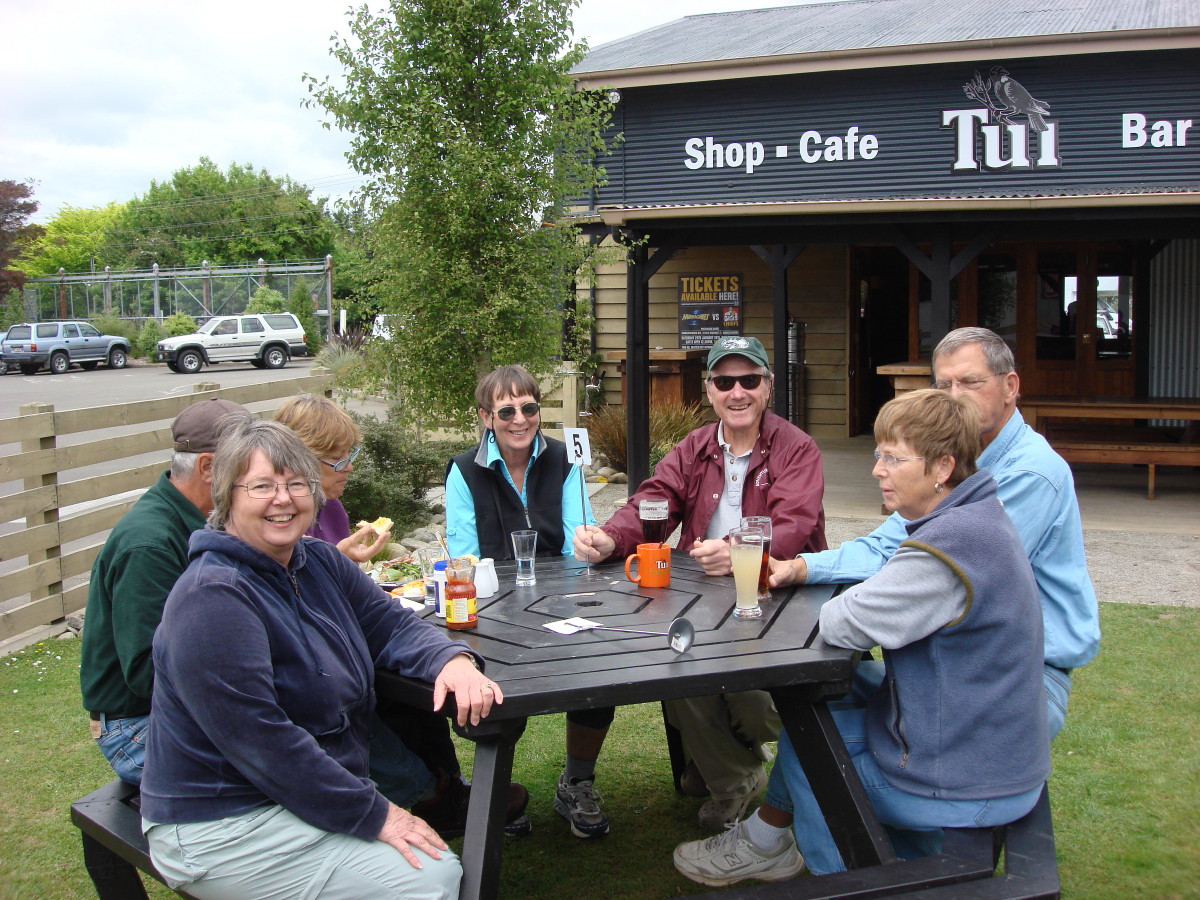


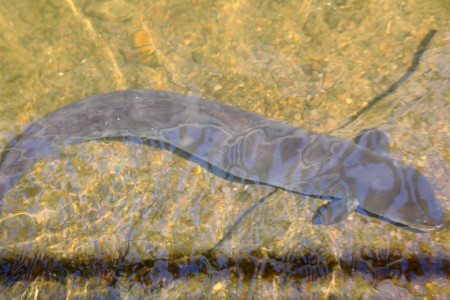
Day 8: A site enjoyed on our last trip is Kaori Wildlife Sanctuary. This
unique protected area excludes the introduced predators that have plagued New
Zealand endemics elsewhere on the main islands. A fascinating Kaori exhibition
hall traces millions of years of natural history, giving real insight into New
Zealand's loss of natural habitat and native animals. At the same time,
the sanctuary illustrates the successful wildlife comeback in their exclosure. This sanctuary and its
inhabitants are a delight to photographers. Here, in the wild, we can see
Bellbird, Saddleback, Whitehead, Red-crowned
Parakeet, and best of all, during a special night tour, Little Spotted Kiwi. We
undoubtedly will hear many Morepork calling and might be lucky enough to see the
owl as we did last trip. Here also are the prehistoric Tuatara that look
like large lizards or small dinosaurs, but are neither.
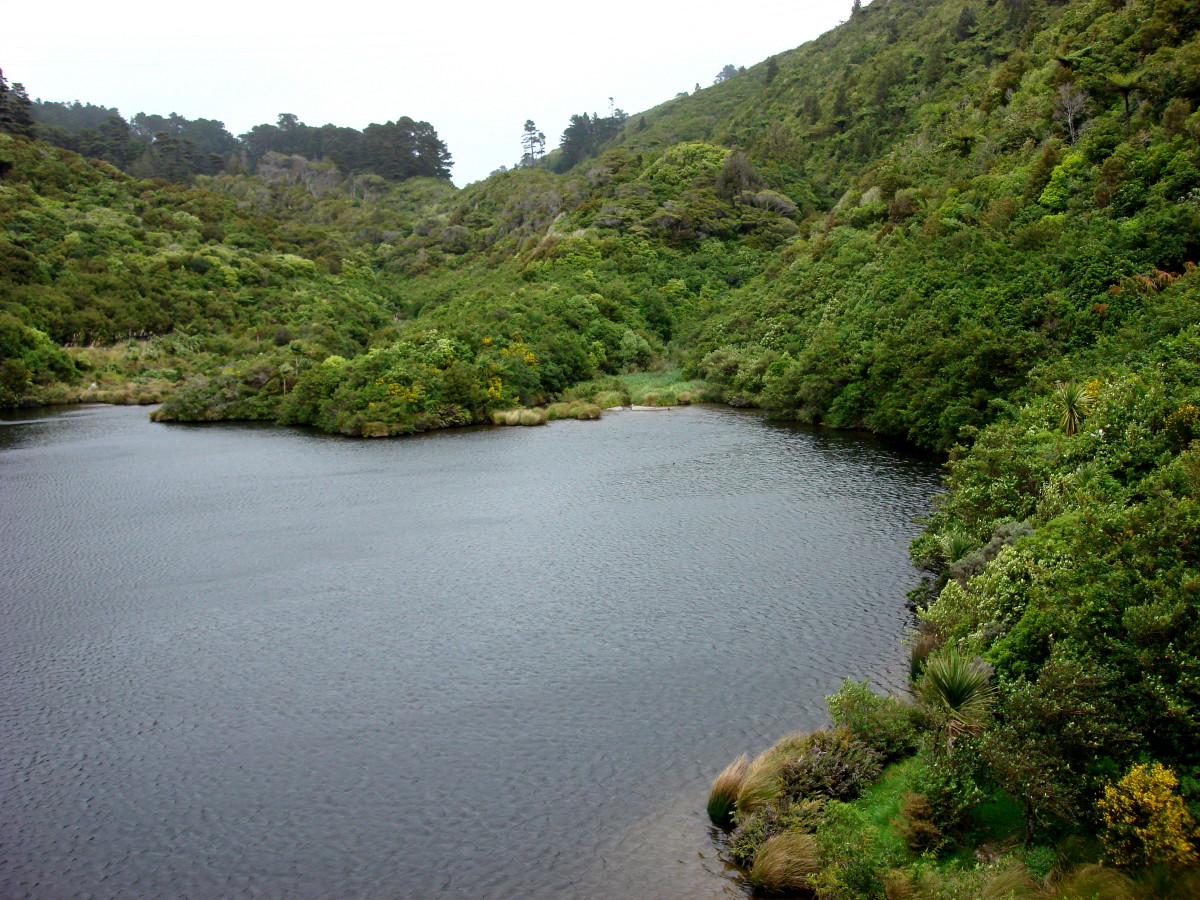
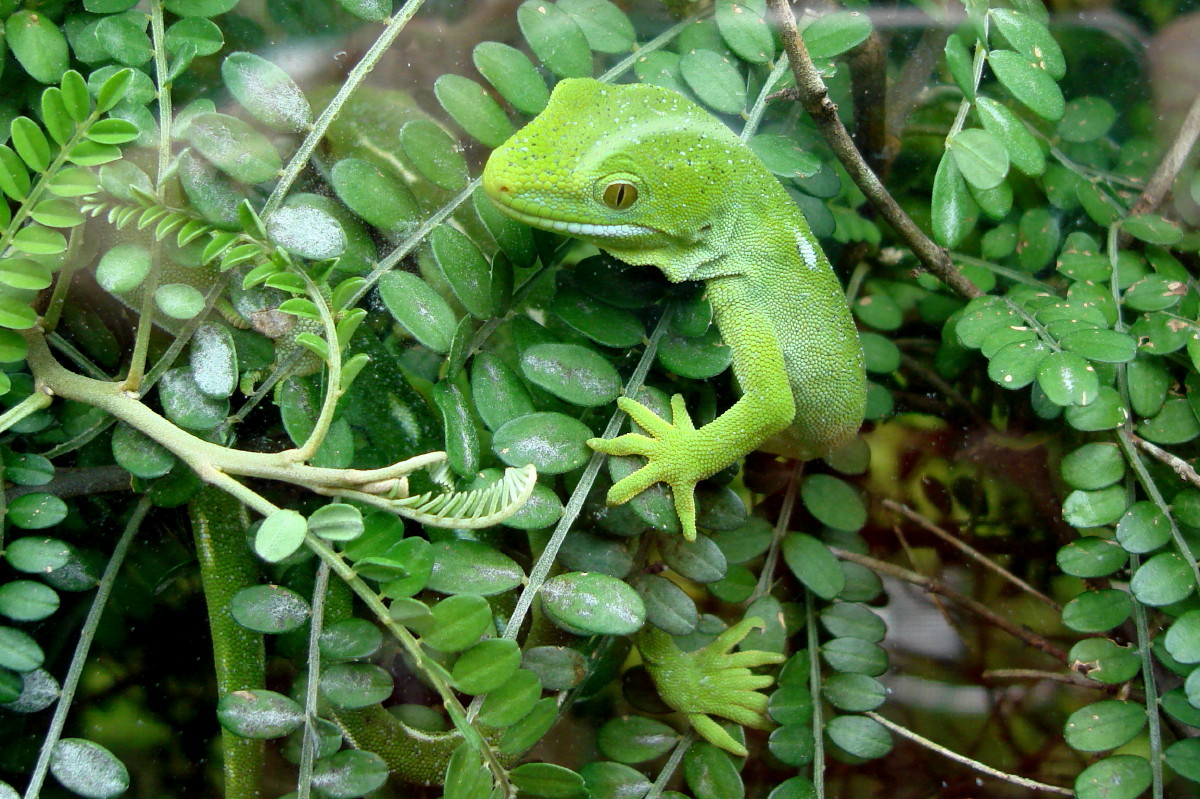
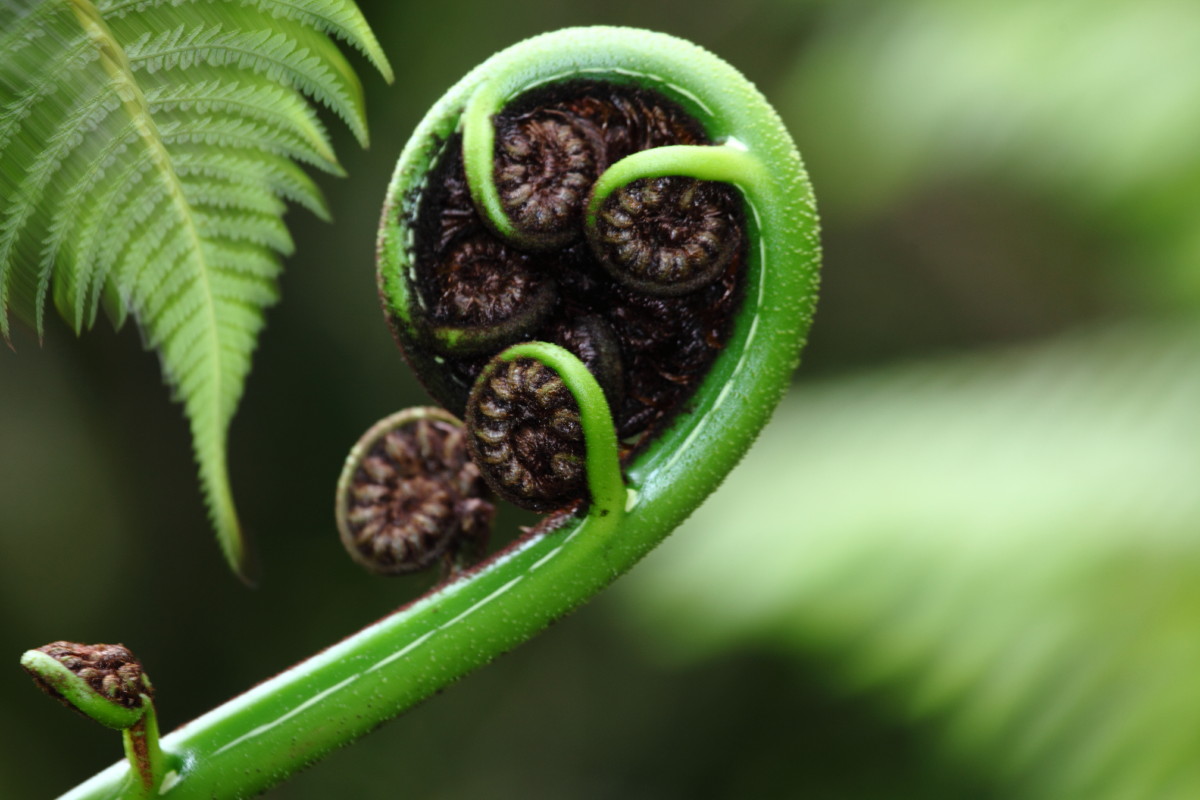
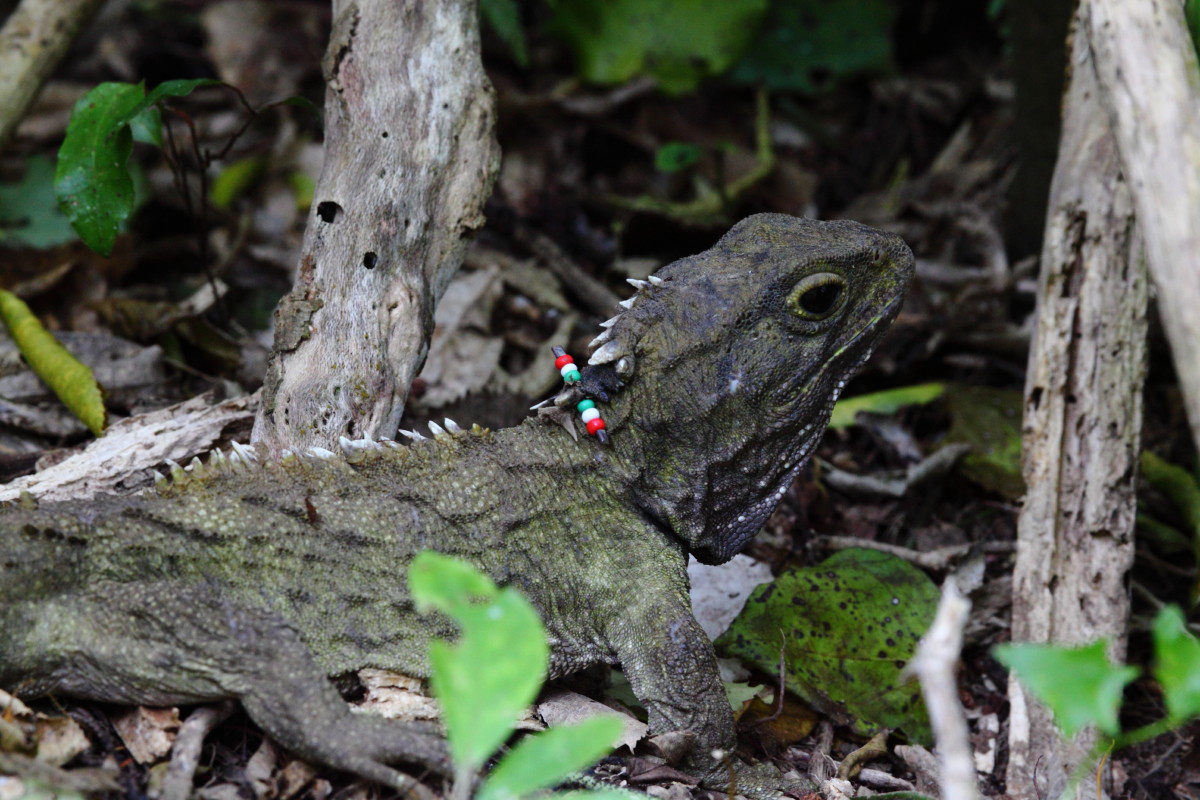
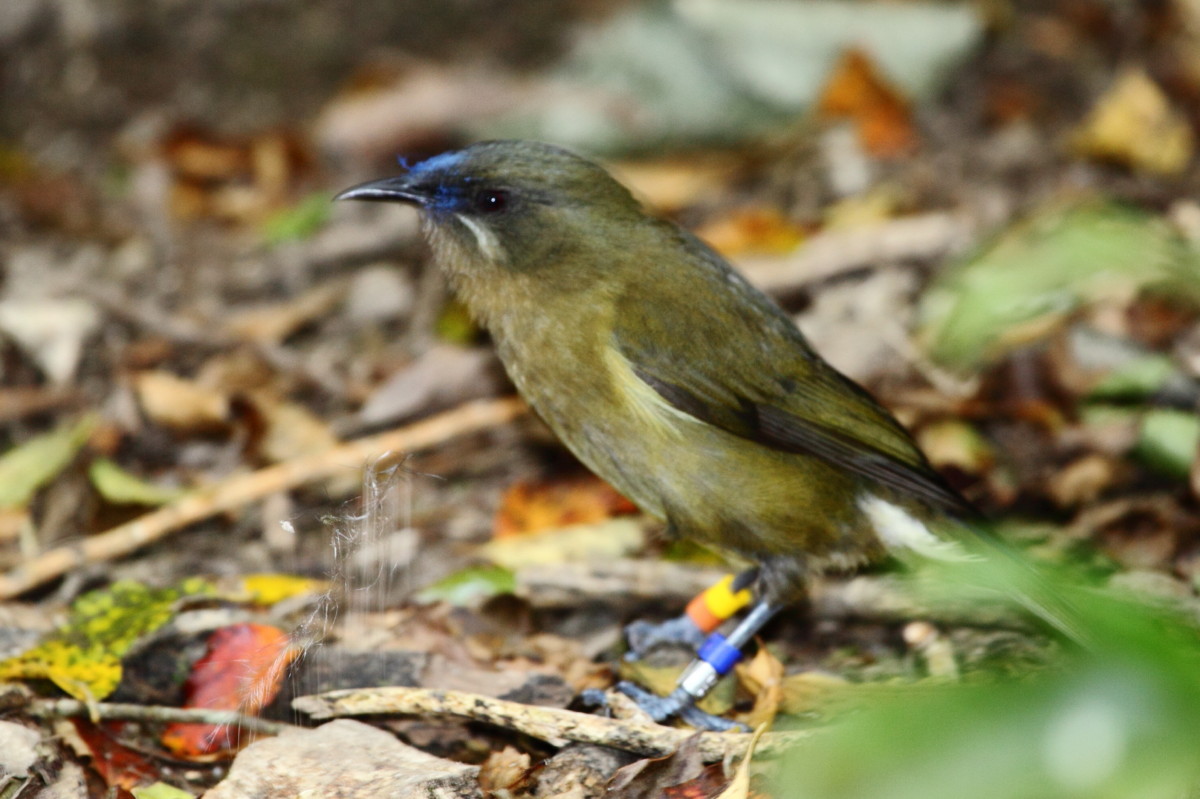
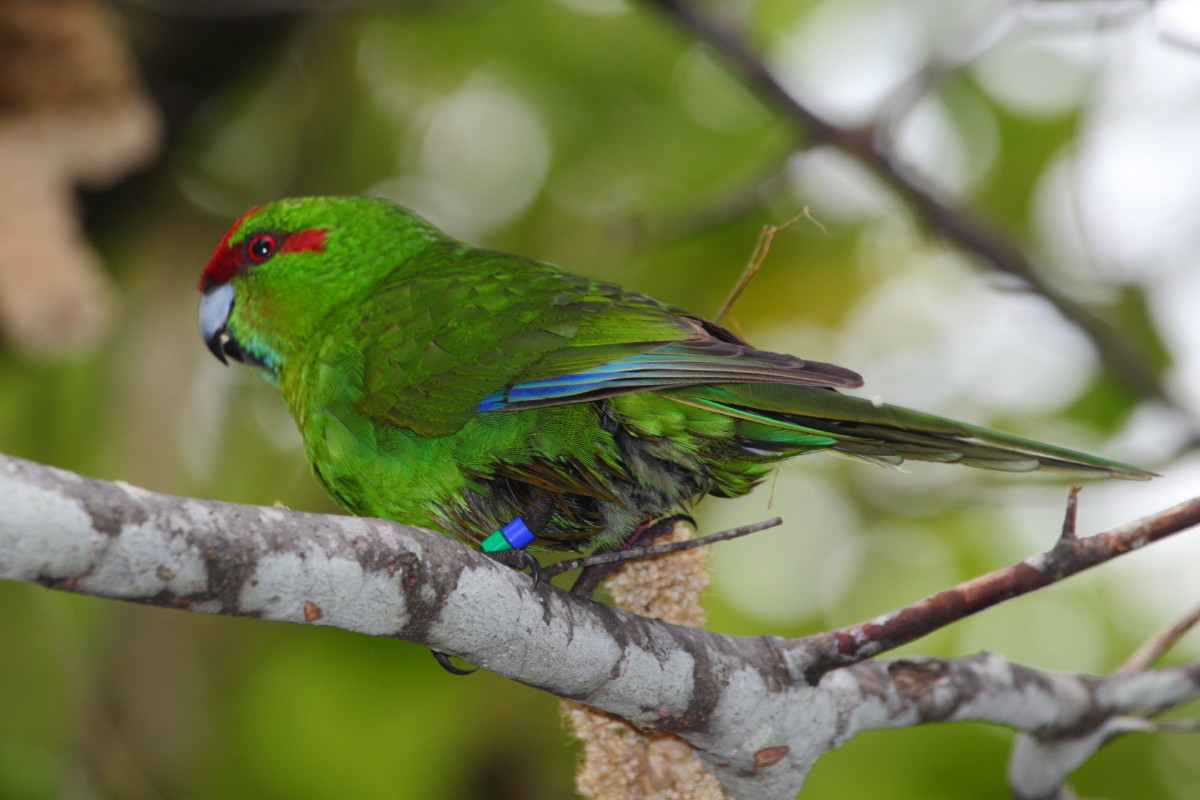
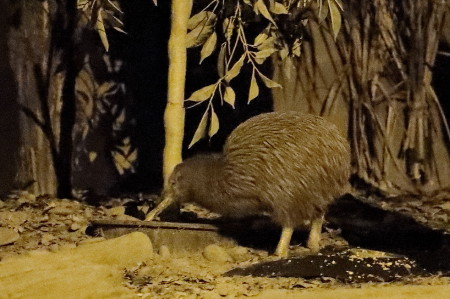
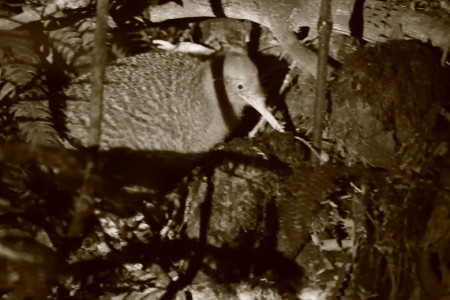
Day 9: Cook Strait separates North Island and South Island.
The
3-hr. car-ferry ride is touted to be one of the most spectacular ferry rides in
the world. We have an excellent chance of seeing up to six species
of albatross, Northern Giant Petrel, and Buller’s Shearwater as well as Common, Dusky and Hector’s
Dolphins, and Killer Whales. If nature and sea breezes is not your thing, you
can relax in the many comfortable lounges or catch breakfast in the cafeteria. Camp is on the South Island at Kaikoura for two
nights (Travel by RV ~105 mi.).

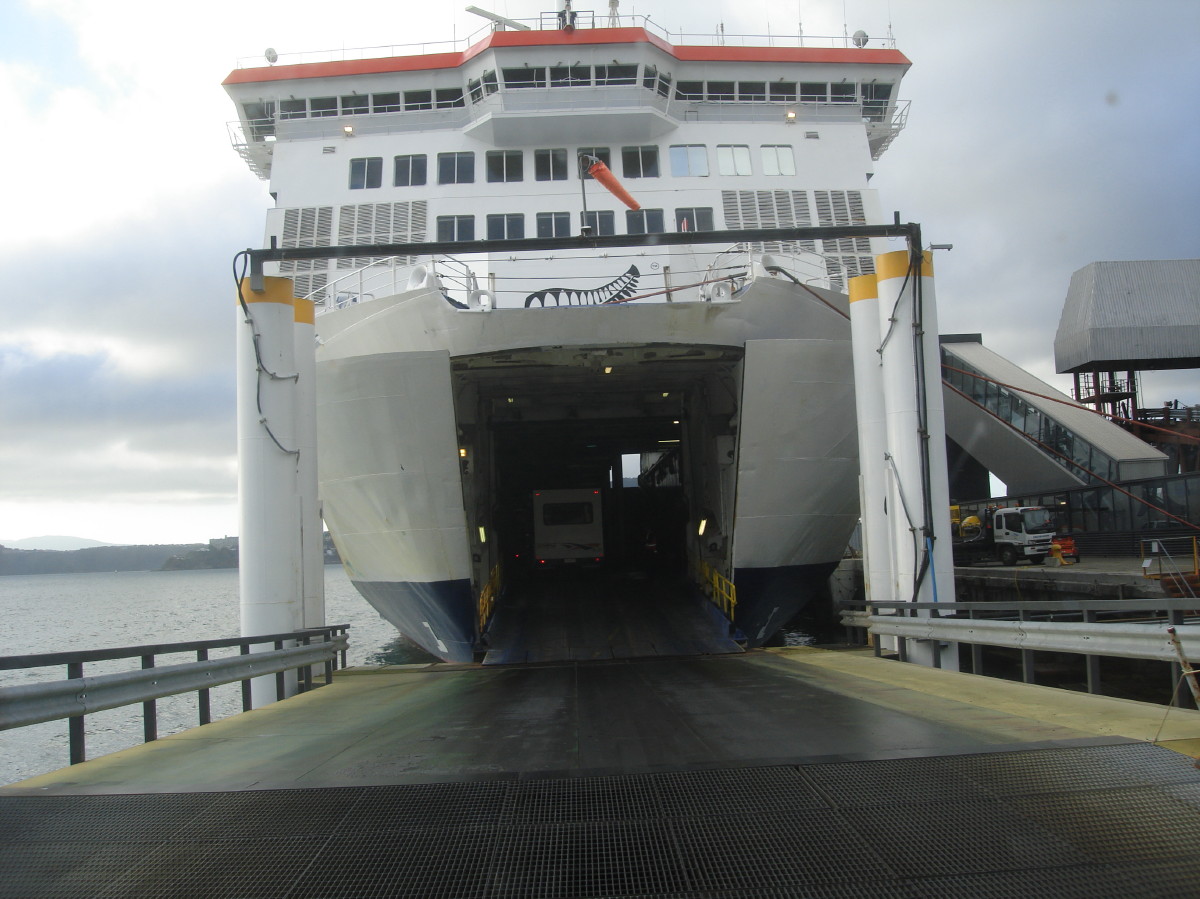

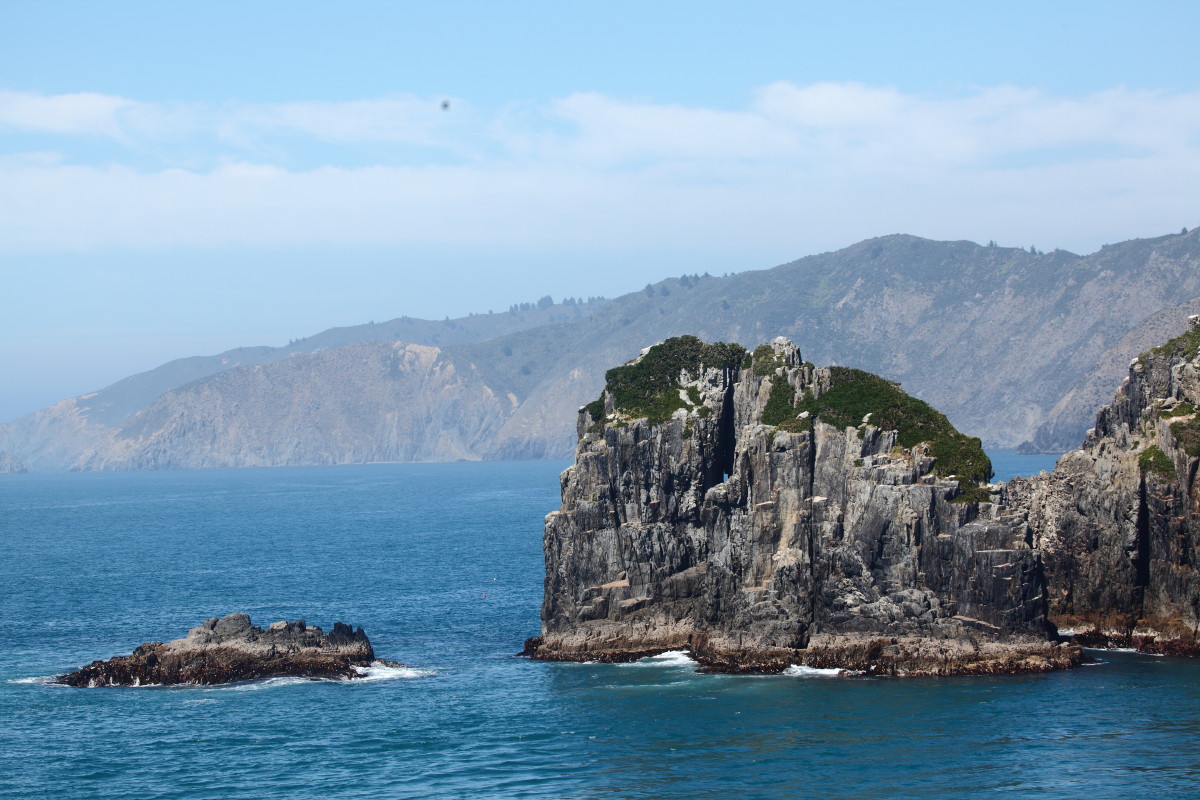
Day 10: Again a choice: birds or dolphins. Some
will take a pelagic boat tour 7 mi. offshore from Kaikoura.
Because they almost never come near land, albatrosses are notoriously difficult to see close
up, but here many come near the boat and we are likely to see Buller’s,
Black-browed, and Salvin's, as well as Giant Petrels and lots of an oddly named
petrel called a Cape Pigeon. The rest of our group will choose the dolphin boat
cruise and see dozens of high leaping dolphins put on a comical show at sea.
Optionally, you can rent snorkeling equipment and wetsuits and swim with the
friendly dolphins. Kaikoura, a
small fishing town, is known for its crayfish (rock lobster) and also hosts a
New Zealand fur seal colony.

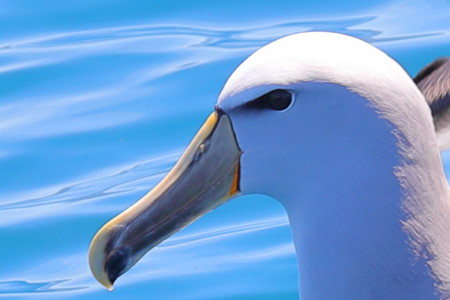


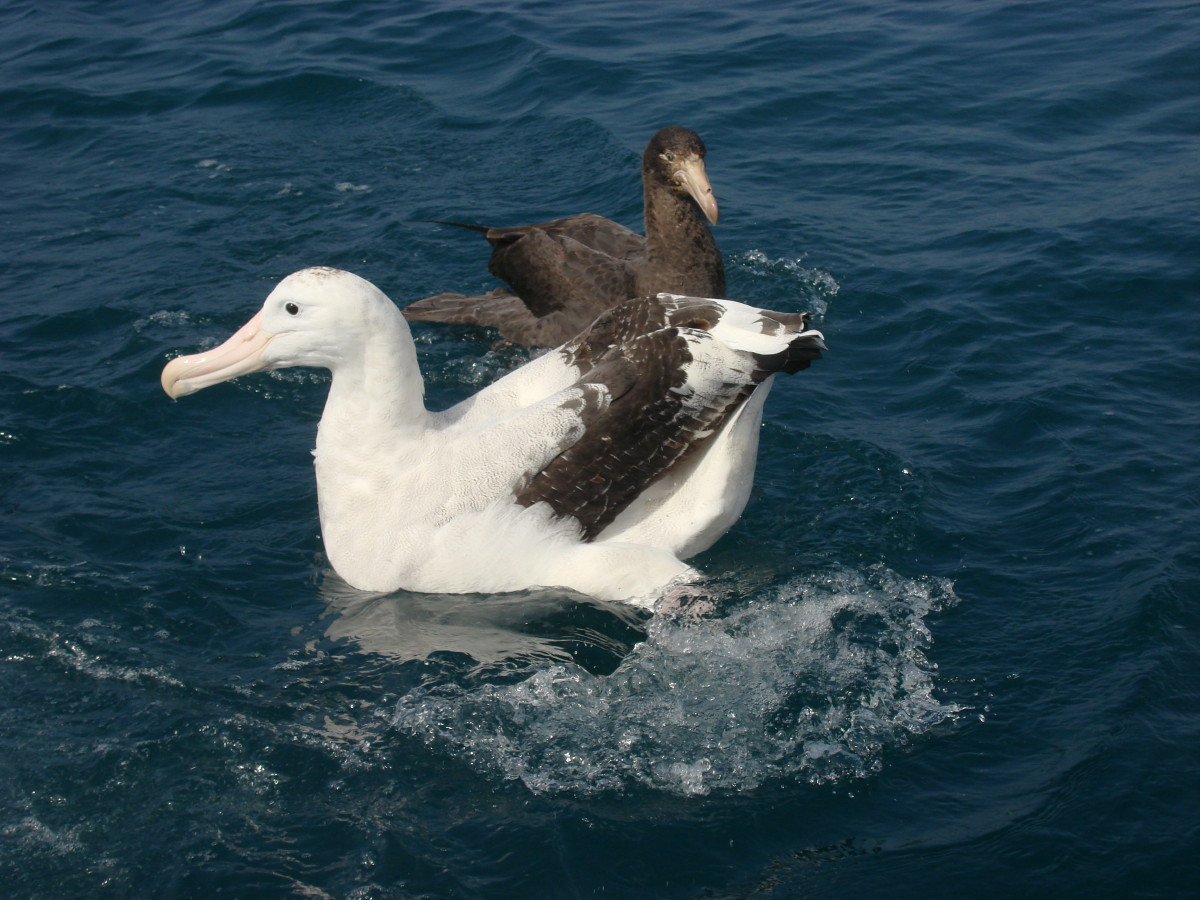

Day 11: We travel to Christchurch, with a free afternoon to visit some sites
on your own. You can view the incredible effects of several recent
earthquakes and the slow rebuilding of this famous city, which also offers
several great museums and a beautiful botanic garden. Camp at Christchurch. (Travel ~111 mi.).
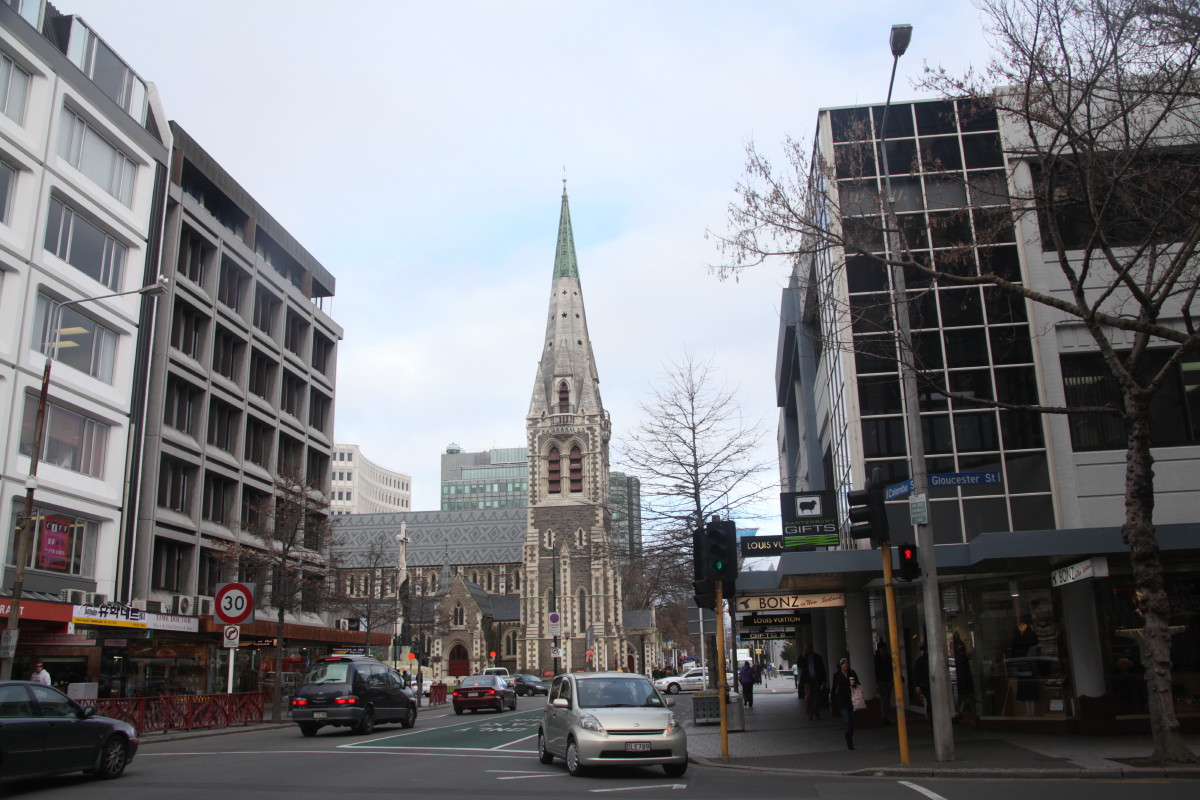

Day 12: From Christchurch we travel into the Southern Alps to Twizel, Lake
Ruataniwa, and in clear view of Mt. Cook at 12,136 ft. the highest mountain in
Australasia. Take a break to see the old stone Church of the Good Shepherd with
its marvelous view of Lake Tekapo, backdroped by snow-covered mountains.
Then drive beside Lake Pukaki, past the alluvian fan caused by glacier melt
water runoff, and climb to the end of the road for your closest view of Mt.
Cook. For the bird enthusiasts, backtrack to that alluvial fan (Tasman
Delta) and search for Black Stilt, the world’s rarest wading bird.
Last trip we found Pied Stilts, Black Stilts, and an odd hybrid of the two
species. Camp
at Twizel. (Travel ~177 mi.).

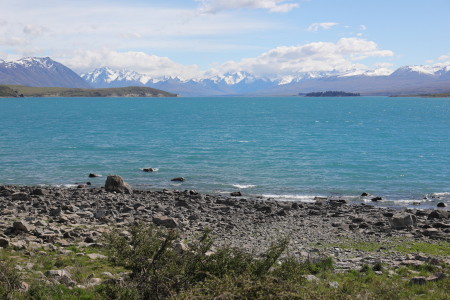


Day 13: Continuing through the Southern Alps, we pass a series of turquoise
lakes and a salmon-raising pond popular for New Zealand Scaup. The braided
streams have become flowerbeds for colorful introduced lupines, pretty to view
but environmentally disruptive. In the evening we will take a Lake
Wakatipu cruise on a 1912 vintage steamer from Queenstown and enjoy a gourmet
dinner prepared from locally grown fresh products. We will also get a
demonstration of sheep shearing and an exhibition of sheep-herding dogs. Camp in Queenstown
(2 nights). The city was originally a sheep
run, then a gold rush town, and now South Island's most popular ski resort, set
on Lake Wakatipu among rugged peaks and hills smoothed by glaciers. (Travel
~124 mi.).



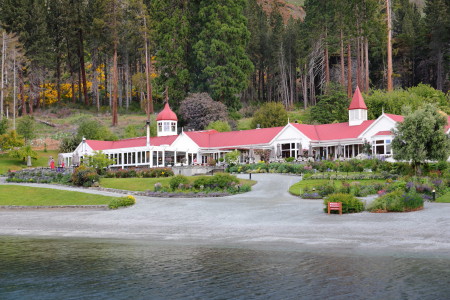
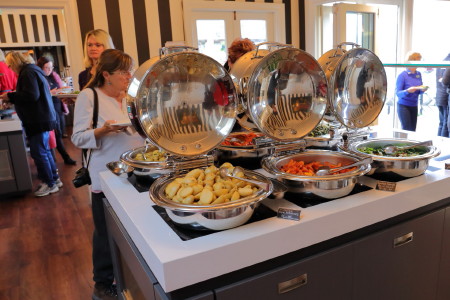
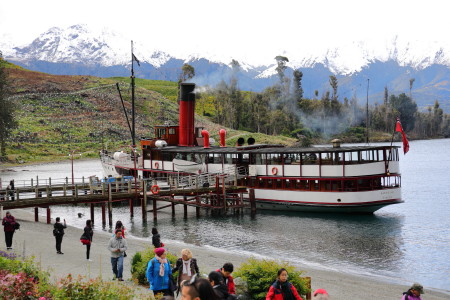
Day 14: Just because we aren't here in ski season doesn't
mean we can't enjoy the mountains. We'll take a gondola ride to Bob's Peak
and high in the mountains we can take multiple rides on a luge, an experience I
doubt few have had. You are on your own for dinner, but we are sure many
of you will want to try one of the many great restaurants this ski town has to
offer. Overnight Queenstown.
Day 15: Passing through mountains, beside large lakes, and then descending to
broad farmlands populated by thousands of sheep and large herds of Red Deer, we thread our way toward the
west coast, stopping at Te Anau. In the afternoon we can explore part of the
expansive 12,000-sq.km. Fiordland National Park, including its rugged
snow-capped mountains, vast river valleys, dense forests, mirrored lakes, and
cold rushing rivers. We should have enough time to reach Monkey Creek,
home of the Blue Duck, or the Homer Tunnel, before we head back to Te Anau.
At the last stop or two we will undoubtedly meet the comical Kea at the parking lot. A
friendly alpine parrot, it has a fascination
for tires, windshield wipers and checking out the roofs of RVs.
Camp at Te Anau for two nights. (Travel ~106+ mi.).
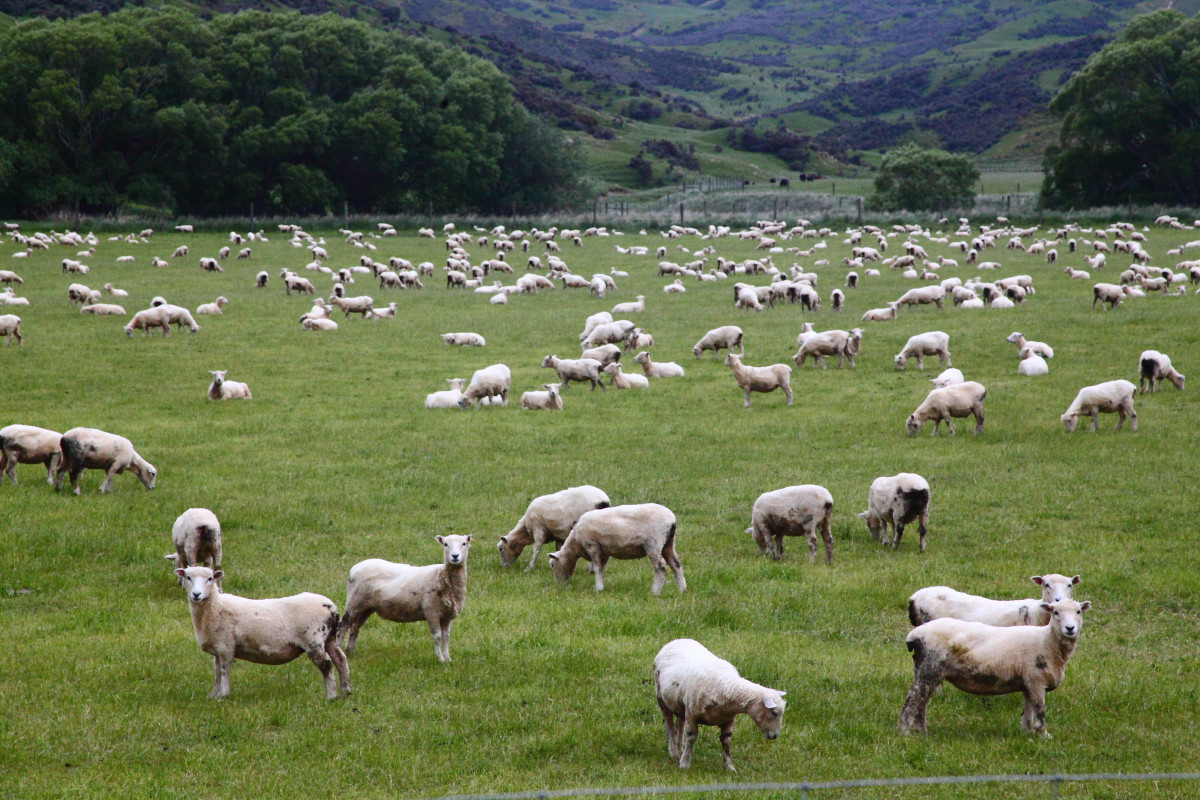
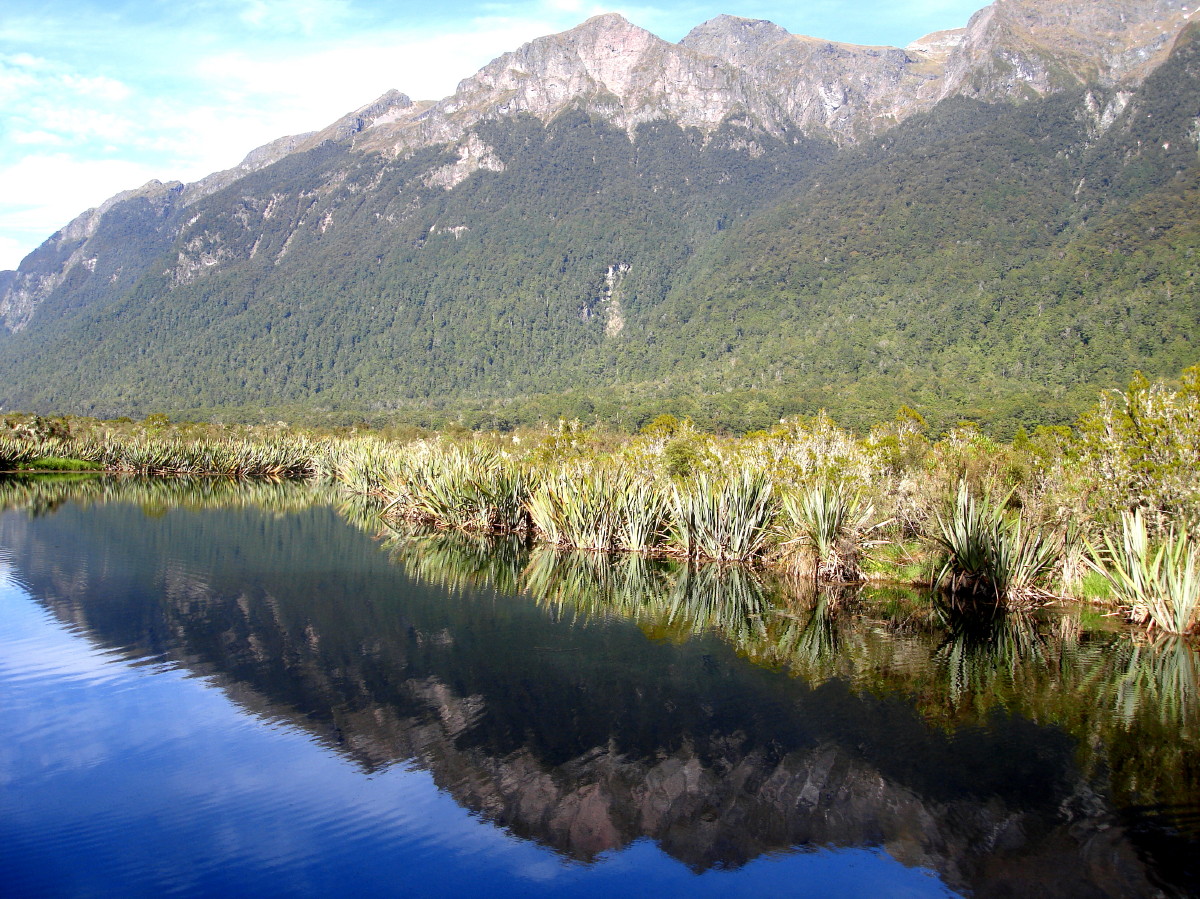


Day 16: The day is dedicated to exploring Fiordland National Park, encompassing
wet forests, lakes, braided rivers, alpine meadows, glaciers, snow-capped peaks,
and fiords. Rudyard Kipling described magical, unforgettable Milford Sound as
the eighth wonder of the world and to this day it is one of the most famous
attractions in New Zealand. We will cruise by tour boat through
Milford Sound to the Tasman Sea, viewing glacier-capped mountains that rise a
mile high directly from the sea. Most spectacular are the many amazingly tall
waterfalls including one that is the Fountain of Youth for those that catch its
spray. We have a chance at seeing Fiordland
Crested Penguins and undoubtedly will find New Zealand Fur Seals lounging on the
rocks. In the evening we can visit (option) a favorite restaurant at Te Anau where
locally raised venison is a specialty on the menu.
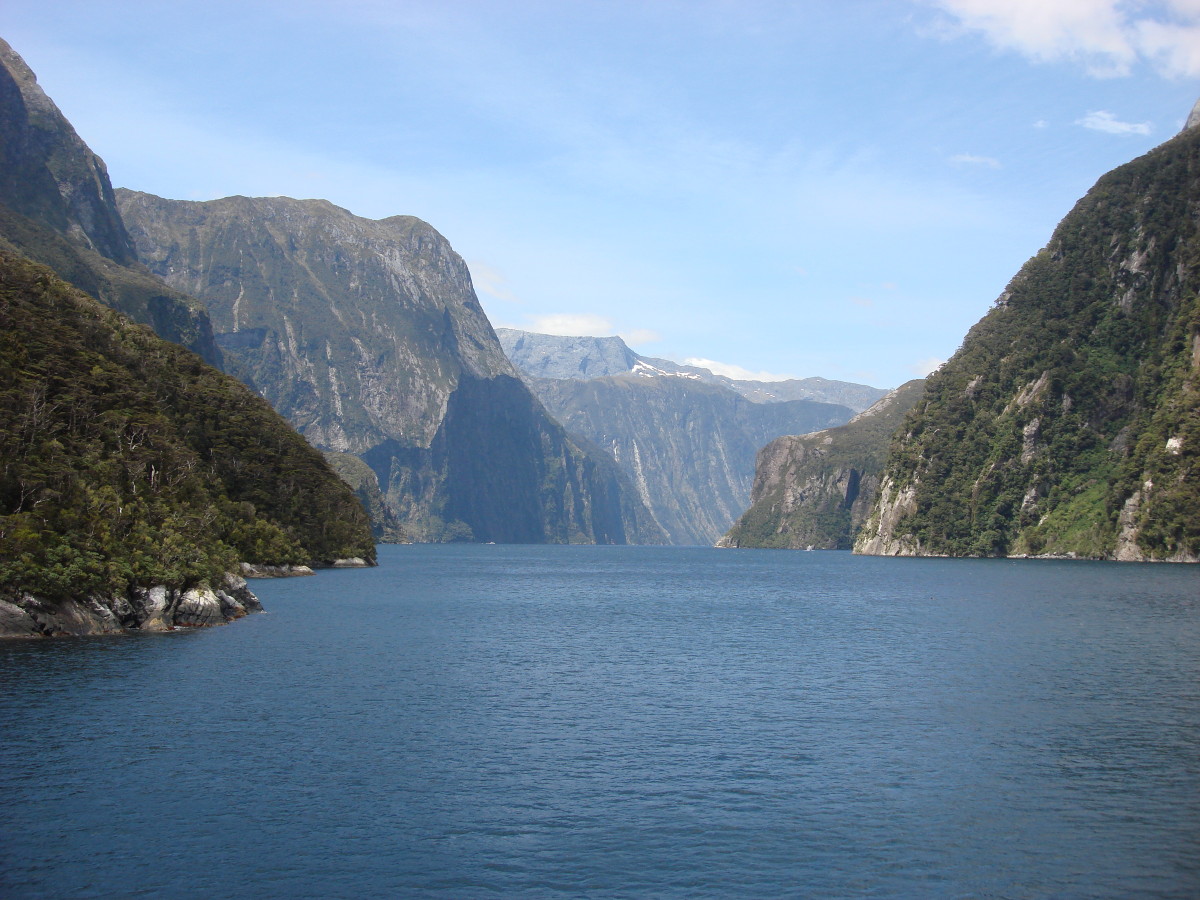
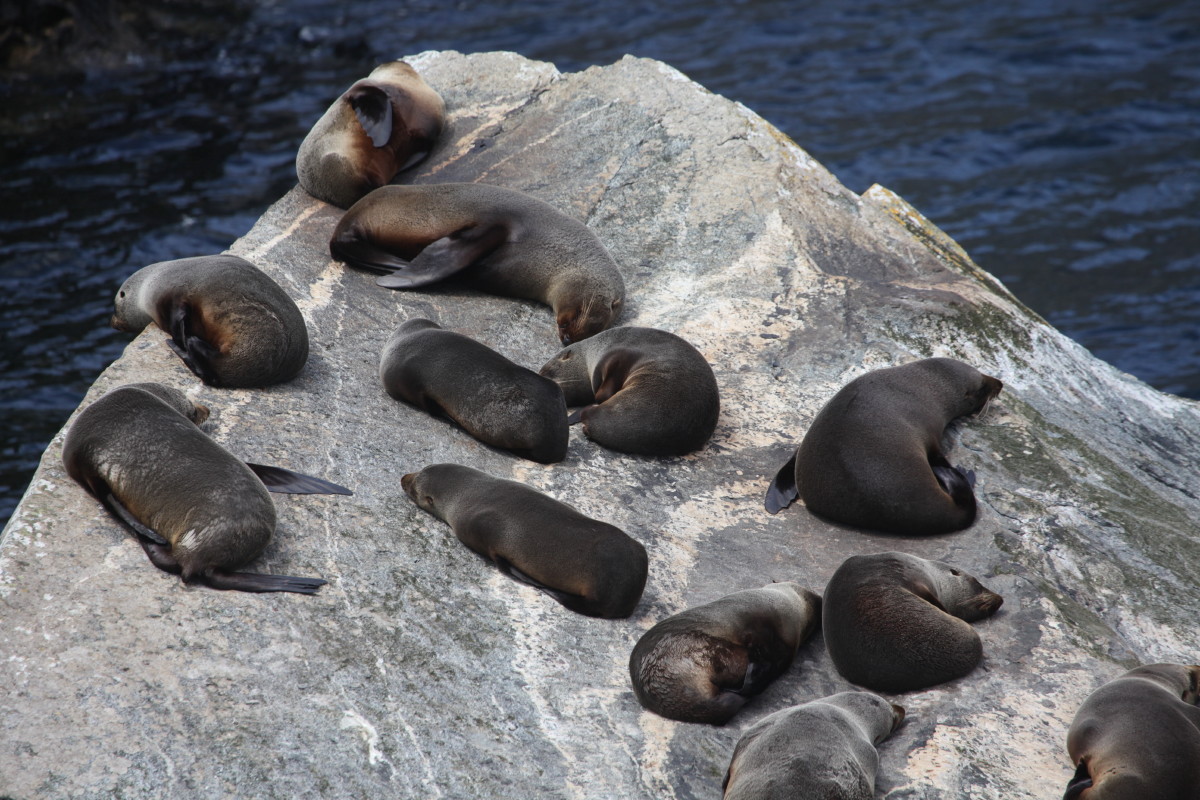
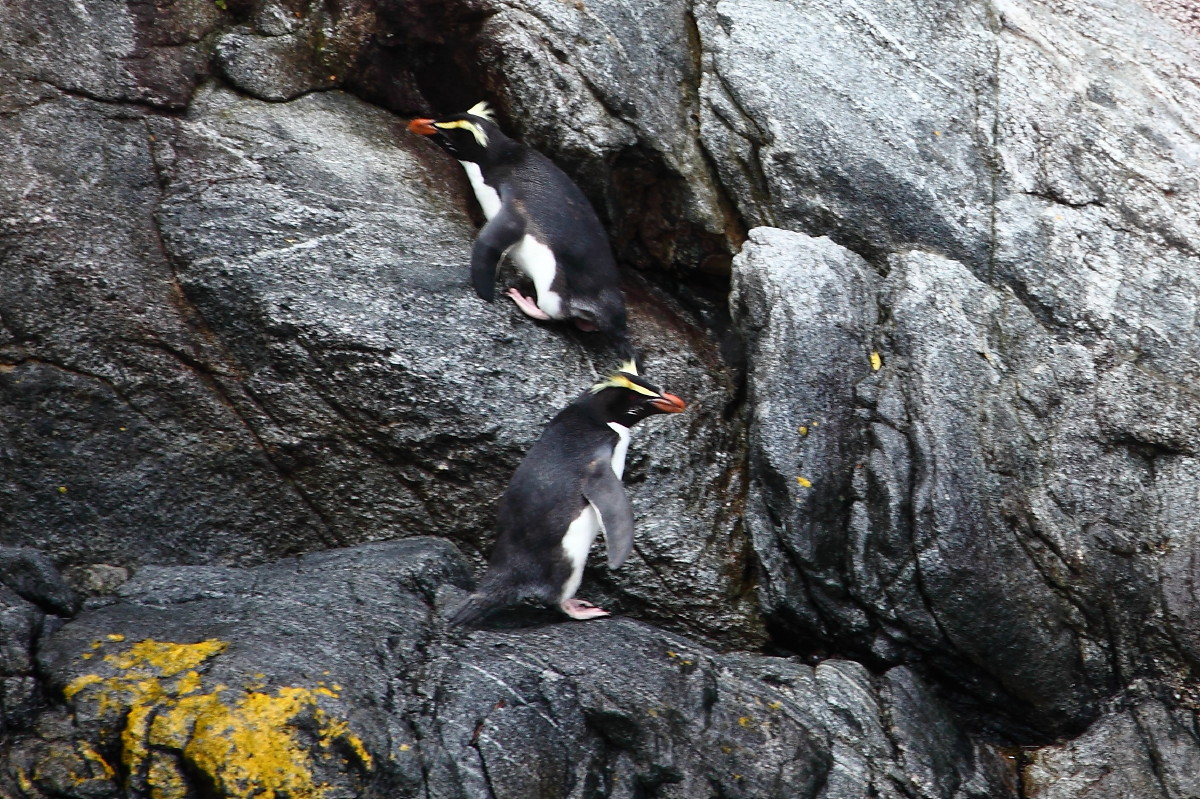

Day 17: Today we cross to
the southeast coast of South Island at Dunedin, choosing among several routes,
depending how much of the coastline you want to explore or taking a side trip to
the preserve at Sinclair Wetlands. Camp at Dunedin. (Travel ~177 mi.).


Day 18: Rising at the peak of the Otago Peninsula is
Lamach Castle and Gardens, billed as one of New Zealand's premier visitor
attractions. On the tip of Otago Peninsula we will visit the only mainland breeding
colony of Royal Albatrosses in the world. Heading north now along the coast,
we'll stop to see Moeraki Boulders and then continue to Oamaru where we will
camp near the Blue Penguin colony. We'll visit the colony to see the march of the
penguins, a must-see for everyone. At dusk Blue Penguins emerge from the sea,
pause to survey the beach for danger, and then march across the sand to the
grassy spots where they spend the night in burrows. Overnight Oamaru
(Travel ~72 mi. between campsites).


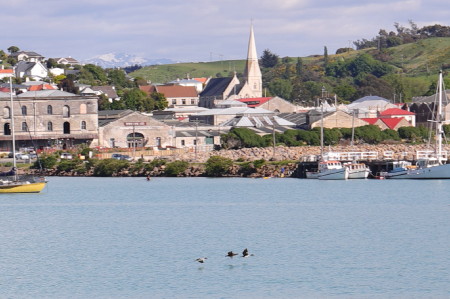
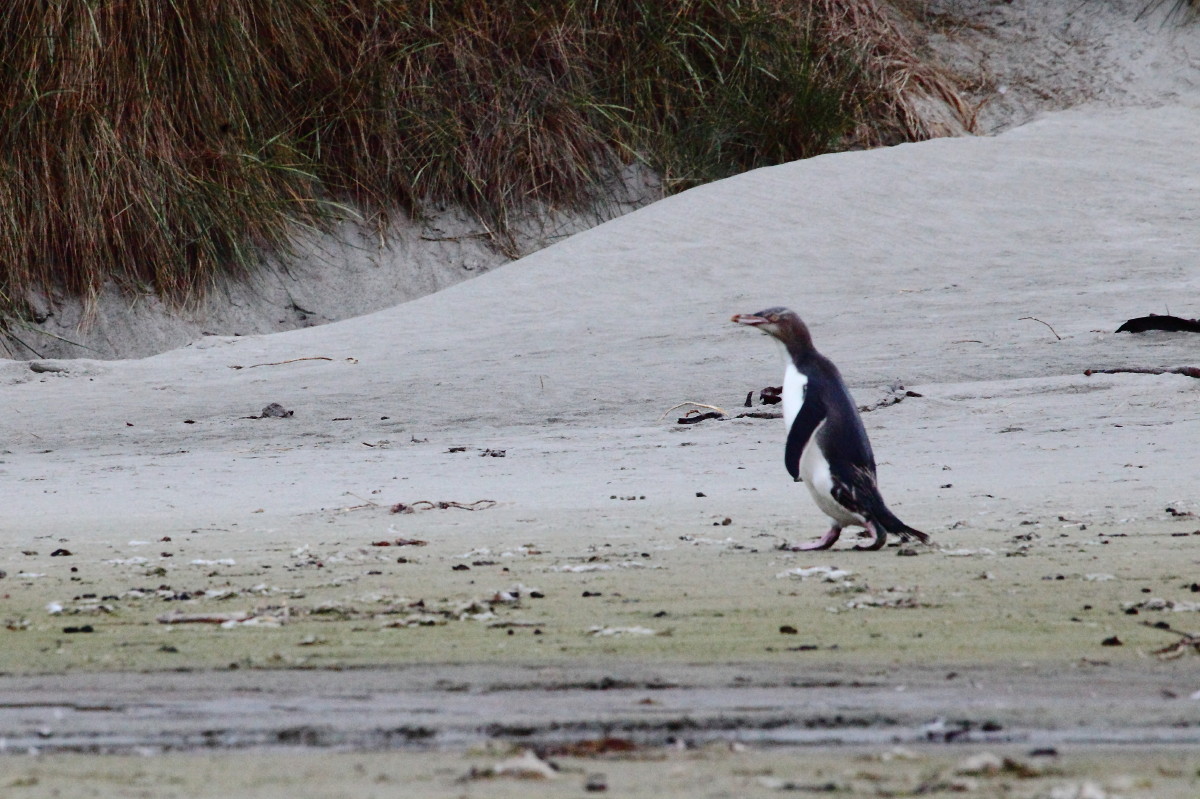
Day 19: We follow the coast to Christchurch.
We will turn in our RVs and transfer to a Christchurch hotel near the airport.(Travel ~153 mi.).

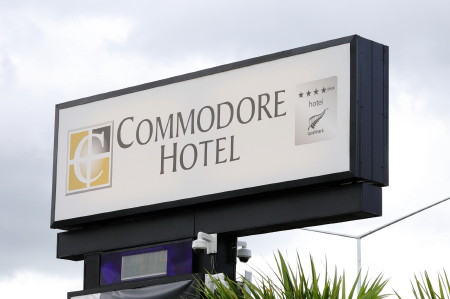
Day 20. We visit the Antarctic Centre which
includes a ride in the all terrain amphibious Hagglund. The center also
includes a Blue Penguin rehabilitation facility. In the
late afternoon and evening we will tour a small wildlife reserve with a captive
breeding program for Great Spotted Kiwi, enjoy a cultural performance by native
Maori people and celebrate our farewell dinner. In darkness only illuminated by
dim flashlights, we will visit the Kiwi enclosures for our farewell to the
national bird of New Zealand..


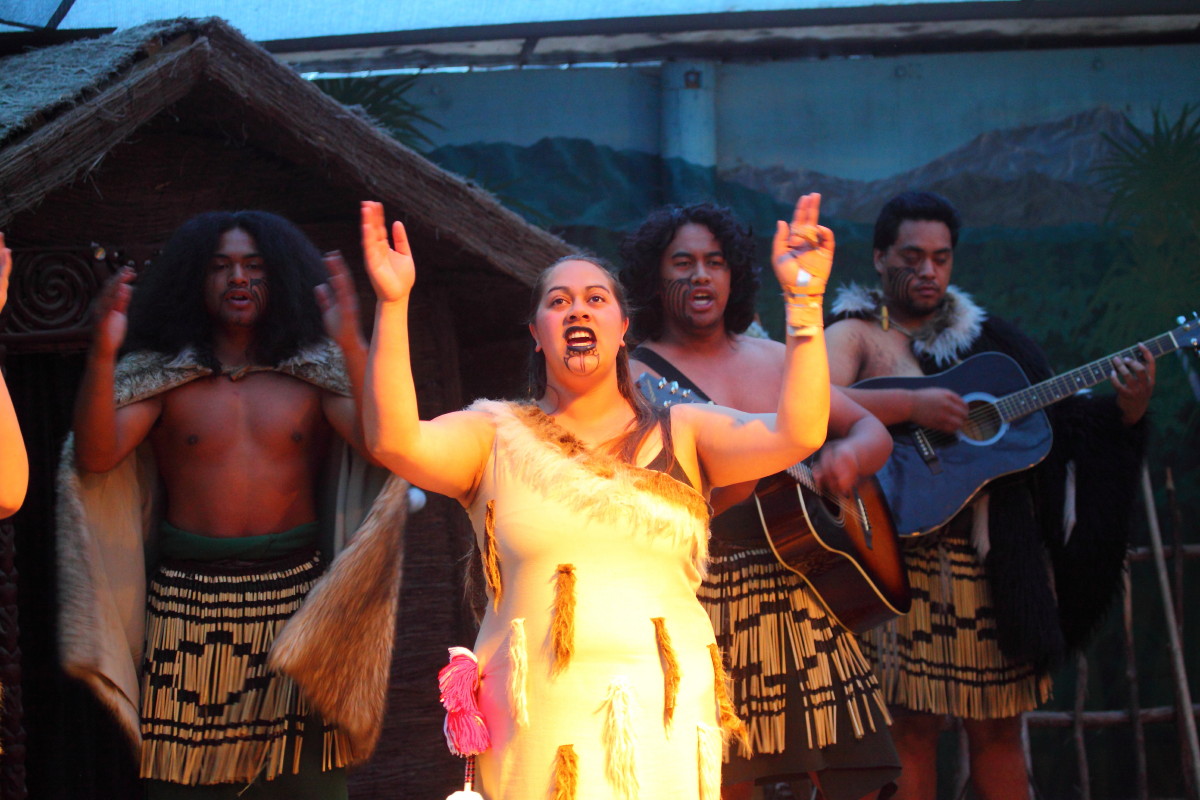
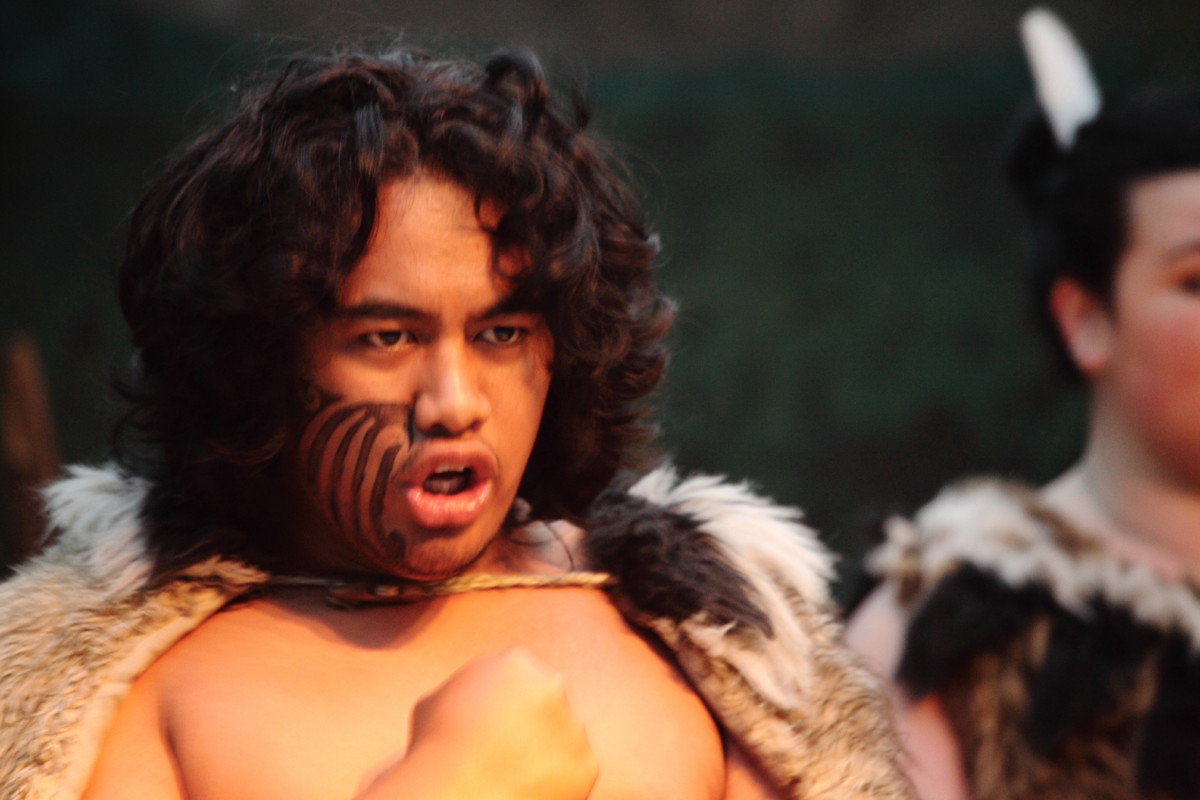


Day 21: Return flights from Christchurch. Free
shuttle transport to the airport.
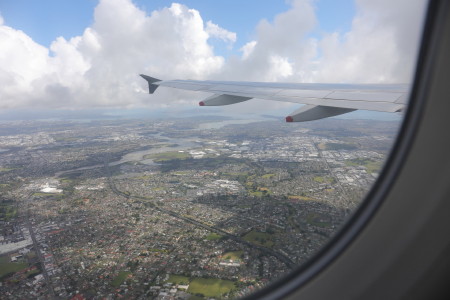

New Zealand North & South Island Tour Price Includes:
- Services of professional naturalist and Wagonmaster
team
- RV rental (17 days)
- RV park campground fees (all sites include electricity)
- Auckland breakfasts (2 days)
- Auckland hotel (2 nights)
- Tiritiri Matangi Island boat transit and island tour, including lunch
- Auckland city tour, including lunch (alternative to Tiritiri
Mantangi)
- Entrance fees and naturalist talk at Miranda
- Waitomo Glowworm Cave Tour
- Ruakuri Cave Tour by boat
- Hobbiton entrance fees and guided tour
- Taupo Rapids Jet Boat
- Wingspan National Bird of Prey Centre falconry demonstration
- Seashore tractor-trailer tour to Cape Kidnappers Gannet
Reserve
- Karori Wildlife Sanctuary entrance fee
- Nighttime Kiwi tour at Karori Wildlife Sanctuary
- Cook Strait ferry
- Kaikoura pelagic boat tour (choice: albatrosses or dolphins)
- Cruise and gourmet dinner on Lake Wakatipu
- Gondola ride to Bob's Peak
- Luge rides
- Milford Sound boat excursion
- Larnach Castle entrance fee
- Blue Penguin Colony night show
- Antarctic Center entrance fee
- Hagglund ride
- Christchurch hotel (2 nights)
- Shuttle to/from Willowbank
- Willowbank Wildlife Reserve entrance
- Maori cultural performance
- Kiwi nighttime tour
- Farewell dinner
- Shuttle to Christchurch airport
- Services of staff who will organize tours & optional activities
- Caravan jackets (or gift certificate for alternatives) and nametags
- "What you should know before you leave" preparatory document
- Trip preparation packet & checklist
- Travel logs and regular briefings





This web site is designed by Bert Frenz.
Copyright © 2010-18 Bert Frenz. All rights reserved.
Revised: February 10, 2018.
 Hard
to beat for spectacular scenery, New Zealand offers
nutrient-rich blue seas teeming with sea lions, dolphins, and fur seals over
which glide albatrosses; shorelines of penguins; rugged coastlines and dramatic
capes hosting gannet and tern colonies; estuaries for spoonbills; mirrored lakes
reflecting snow-capped mountains, sheep-grazed
hills; mossy forests and ancient podocarpus forests where Kokako glide across
the high canopy; alpine meadows and scree slopes; braided rivers spilling down
from the Southern Alps; hanging glaciers; geysers, hot springs, boiling mud
pools and volcanoes; and endemic birds with strange names like Kaka, Kea, and Kiwi.
Curiously, New Zealand has no native land mammals. Enjoy adventures too, like
boat cruises through mile-high fiords, across cold
mountain lakes or into underground caverns. Thrill to a jetboat ride over
river rapids or taking a luge down a mountain track. Visit Hobbiton, the
miniature village where Lord of the Rings was filmed. Take a breath and enjoy it all!
Hard
to beat for spectacular scenery, New Zealand offers
nutrient-rich blue seas teeming with sea lions, dolphins, and fur seals over
which glide albatrosses; shorelines of penguins; rugged coastlines and dramatic
capes hosting gannet and tern colonies; estuaries for spoonbills; mirrored lakes
reflecting snow-capped mountains, sheep-grazed
hills; mossy forests and ancient podocarpus forests where Kokako glide across
the high canopy; alpine meadows and scree slopes; braided rivers spilling down
from the Southern Alps; hanging glaciers; geysers, hot springs, boiling mud
pools and volcanoes; and endemic birds with strange names like Kaka, Kea, and Kiwi.
Curiously, New Zealand has no native land mammals. Enjoy adventures too, like
boat cruises through mile-high fiords, across cold
mountain lakes or into underground caverns. Thrill to a jetboat ride over
river rapids or taking a luge down a mountain track. Visit Hobbiton, the
miniature village where Lord of the Rings was filmed. Take a breath and enjoy it all!



